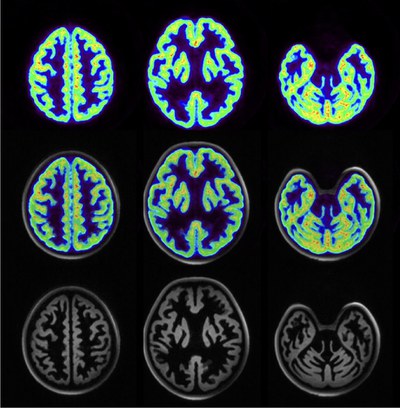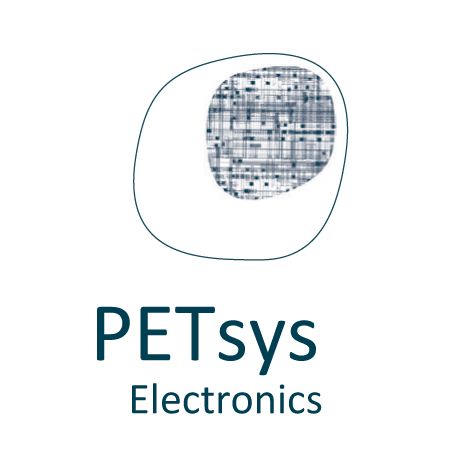News
April 2025
FZ Jülich announced first PET/MRI Measurements
Forschungszentrum Jülich published the latest results of their Hyperion-powered high-resolution PET/MR brain imaging solution on their website.
The BrainPET insert proved its performance in a Siemens Magnetom Terra 7 Tesla MRI scanner. PET and MRI images of a brain phantom were simultaneously(!) taken in the working ultra-high field MRT. The images show a detailed resolution which has not been achieved in this combination until today, and which opens the path for deeper research on functions and diseases of the human brain.
The picture shows the pure PET images in the top row, pure MR images in the bottom row, and the overlay of both in the middle. For more details, refer to FZ Jülich’s website article Brain Imaging at the Next Level.
October 2024
IEEE MIC 2024 Conference in Tampa, Florida
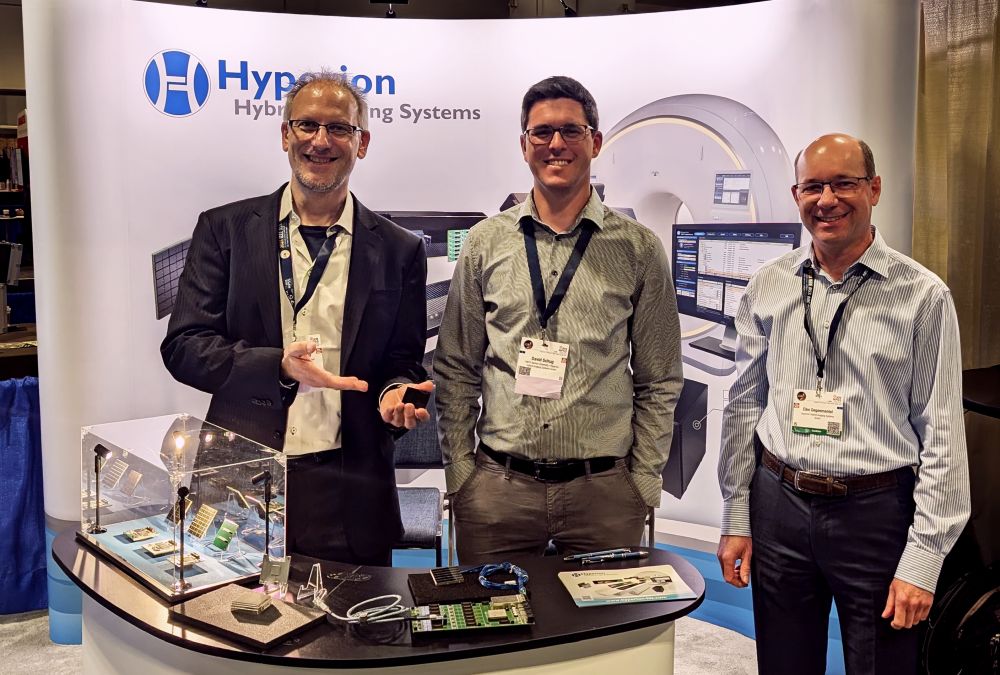
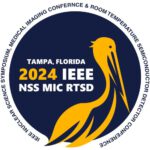 The industrial exhibition of this year’s IEEE Medical Imaging Conference was a great opportunity to show our latest developments, in particular our brand-new family of detector tiles based on analog SiPMs. The new tiles integrate seamlessly into Hyperion’s PET detector platform. From October 29th to 31st, we demonstrated how our platform supports the construction of small, large, and MRI-compatible PET systems.
The industrial exhibition of this year’s IEEE Medical Imaging Conference was a great opportunity to show our latest developments, in particular our brand-new family of detector tiles based on analog SiPMs. The new tiles integrate seamlessly into Hyperion’s PET detector platform. From October 29th to 31st, we demonstrated how our platform supports the construction of small, large, and MRI-compatible PET systems.
A big thank you to all the numerous visitors who took the chance to check out how Hyperion can boost their projects. You may revisit our booth video here.
September 2024
5 Years Anniversary

As we celebrate Hyperion’s 5th anniversary, we reflect on an exciting journey where our platform has been the foundation for numerous research projects. We are grateful to our customers for their trust and support, and we look forward to continuing this journey together, seizing new opportunities to provide impactful technology for medical research.
Our commitment to advancing our platform remains unwavering. We are dedicated to bringing our innovations into research centers and clinics, contributing to the medical field through many more groundbreaking projects in the years ahead.
November 2023
IEEE MIC Conference in Vancouver, Canada
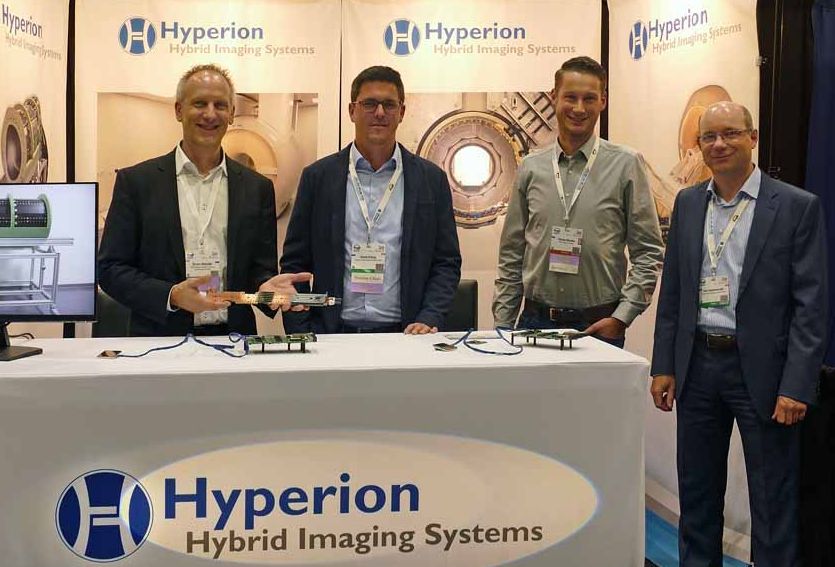
From November 7th to 9th, 2023, we presented our demonstrators and service portfolio at the industrial exhibition of the annual IEEE NSS MIC 2023 conference in Vancouver, Canada. This was a great chance to meet and talk in person. We like to thank all current and potential partners, suppliers, customers and otherwise interested for their visits and exchange.
November 2023
First PET images from Brain Insert to be presented at IEEE MIC 2023
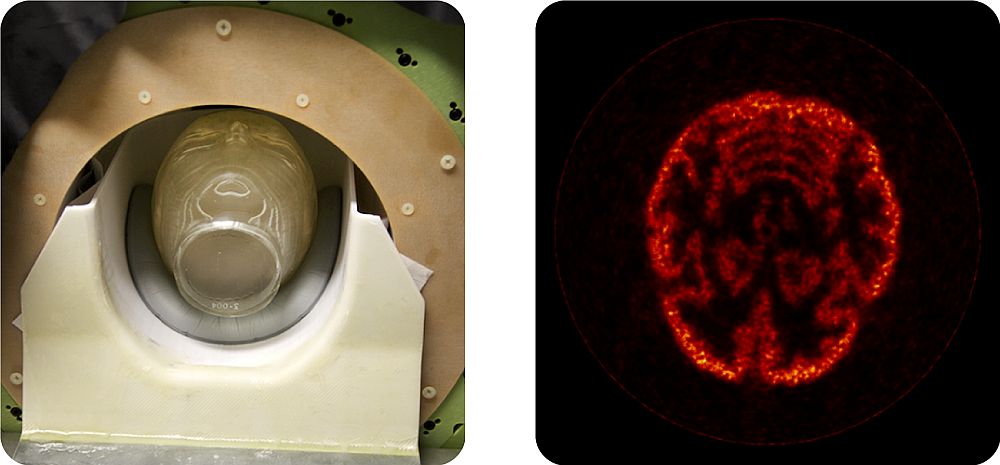
The research center in Juelich performed first very promising scans with the brain insert based on Hyperion’s PET/MRI platform after successful commissioning and setting up their image reconstruction. A human brain phantom was filled with 45 MBq of activity. In a realistic scenario, including head rest and MRI RF coil, the phantom was scanned for 2 minutes and reconstructed with a voxel size of 0.625 mm x 0.625 mm x 1 mm. Images show already great detail and will further improve once the image reconstruction will add corrections and normalizations.
Dr. C. Lerche from FZ Juelich presented the results on the NSS-MIC 2023 conference in Vancouver, Canada in the High resolution imaging systems session: “First Performance Results of a UHF-MRI Compatible BrainPET Insert for Neuroscience”.
October 2023
Platform integration: PETsys TOFPET2
Due to the long and positive experience of our research partner RWTH Aachen and us with the TOFPET2 ASIC from PETsys (PETsys Electronics – Medical PET Detectors, S.A., Oeiras, Portugal), we are fully integrating the ASIC into the Hyperion detector platform. Sensor tiles employing analog SiPMs digitized with the TOFPET2 ASIC are available soon. These sensor tiles will be used for the future PET and PET/MRI projects such as the HD-MetaPET scanner and the S-PET project.
September 2023
Workshop on PET Electronics & Technologies
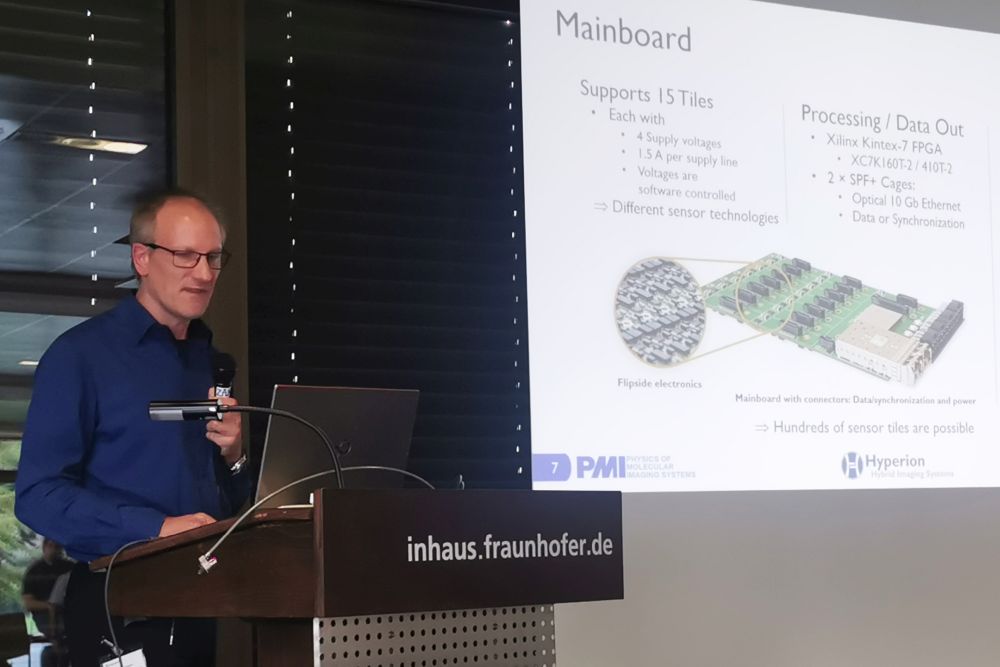
September 12th – 14th, the PET Electronics & Technologies 2023 workshop on Electronics and Advances for Future High-Performance PET Systems was held at the Fraunhofer IMS center in Duisburg, Germany. The workshop discussed requirements from PET applications, systems and gamma detectors as well as photo detectors, read-out electronics, 3D integration, ASICs and digital signal processing, up to algorithms and AI for data analysis. Being recognized as experts in these fields, Hyperion contributed by presenting an invited talk about “The need for flexible common platforms and open interfaces for PET research” and debated the “Future Direction of PET” in the respective panel discussion.
May 2023
Kickoff of the S-PET project

The annual burden on the healthcare system from the treatment of Alzheimer’s disease is about twice as high as the costs of treating cancer. Early diagnosis and treatment are needed. While in principle PET can detect pathological proteins 15 years before they cause noticeable changes in patients, the resolution and sensitivity of currently available clinical PET scanners is not sufficient to detect the related early tiny changes. The S-PET project aims to close this gap by expanding Hyperion Hybrid Imaging Systems’ MRI-compatible PET detector platform with a new detector that enables the required high resolution and high sensitivity under consideration of low resource consumption and MRI-compatibility.
The project is conducted in collaboration with the Institute for Experimental Molecular Imaging (ExMI) at the RWTH Aachen University, under the leadership of Hyperion Hybrid Imaging Systems.
 The German Federal Ministry of Education and Research funds this project “KMU-innovativ – joint project: Scalable Positron Emission Tomography (S-PET) for early detection of Alzheimer’s disease” under contract number 13GW0609A.
The German Federal Ministry of Education and Research funds this project “KMU-innovativ – joint project: Scalable Positron Emission Tomography (S-PET) for early detection of Alzheimer’s disease” under contract number 13GW0609A.
April 2023
DGN NuklearMedizin in Leipzig, Germany
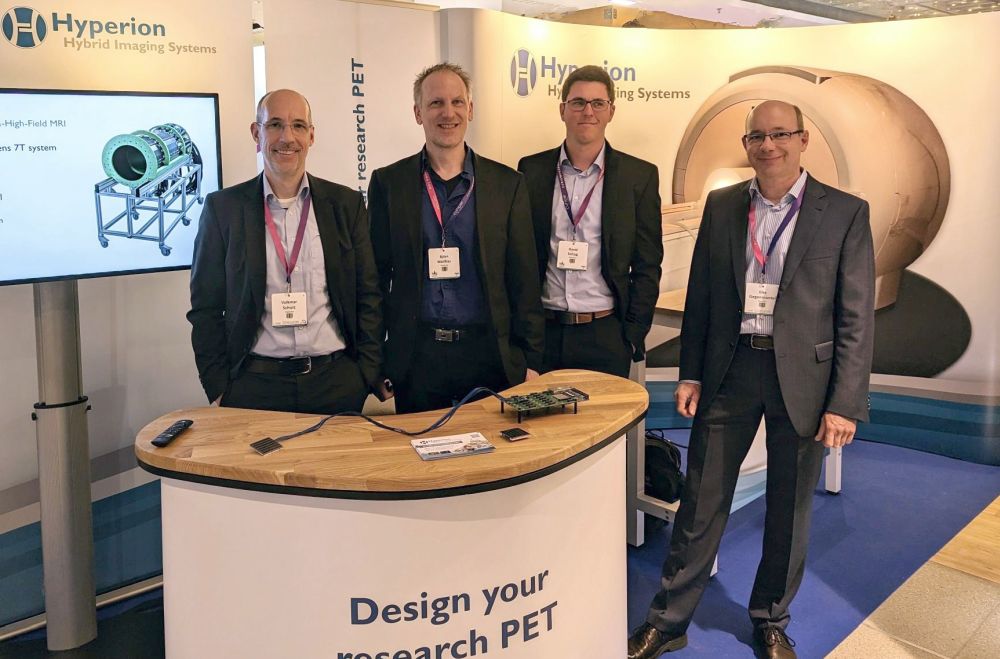
From April 19th to 22nd, 2023, Hyperion Hybrid Imaging Systems was present at the DGN NuklerMedizin 2023 in Leipzig, Germany.
August 2022
Successful finalization of the Hypmed project
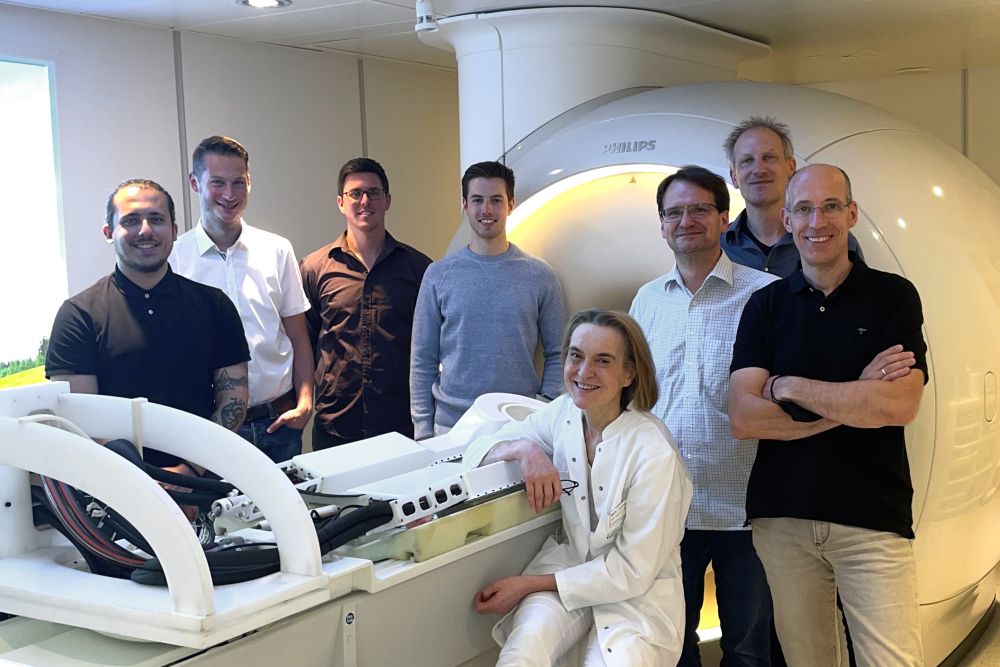
In the months before, the Hypmed insert proved its performance on simultaneous PET/MRI imaging at multiple occasions in the Radiology Department of the Aachen University Hospital. Beside verifying the correct function of MRI sequences as per the standard protocol in the clinic, extensive MRI compatibility tests were conducted.
Particularly noteworthy were tests that demonstrated the homogeneity of the static magnetic field, a critical factor given the proximity of the detectors to the patients. B1 maps were also evaluated to assess the transmit-through concept.
An additional highlight was the simultaneous PET/MRI measurements of structured phantoms, which demonstrated the resulting spatial resolutions. The same phantoms were scanned in a commercial PET/MRI system by the Medical University of Vienna. Direct comparisons underscored the superiority of a dedicated system, with detectors close to the organ of interest, over a generalized whole-body system.
May 2022
Kickoff of the HD-MetaPET project
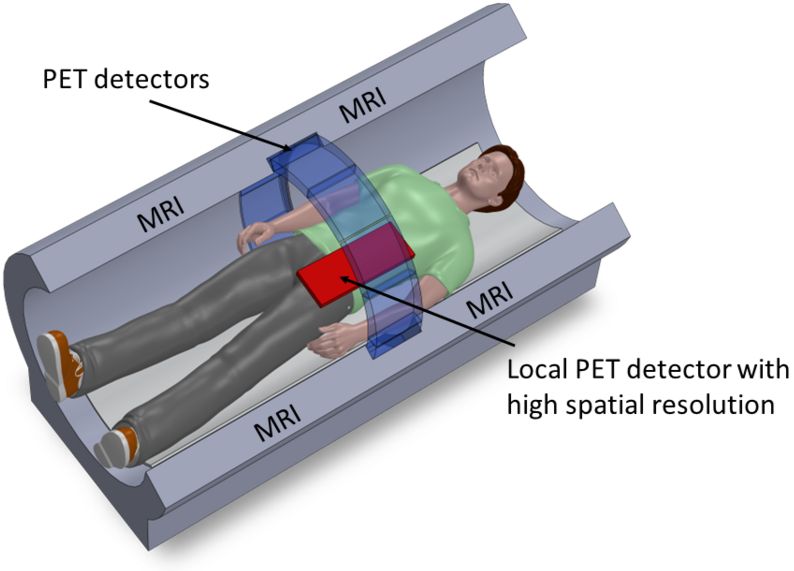
Rare cancer types pose a significant challenge for patients and physicians. Unfortunately, it is often very difficult to diagnose and treat these rare diseases with current imaging modalities and procedures. In the last approximately ten years the combination of PET and MRI proved to enhance diagnosis, but also showed the limits of current imaging systems. This is where HD-MetaPET steps in: The goal of the project is to improve the spatial resolution of PET for simultaneous MR/PET to nearly 1 mm, enabling the visualization of even the smallest tumors or minute changes within tumors.
The project is conducted as a collaborative project in partnership with the Institute for Experimental Molecular Imaging (ExMI) at the RWTH Aachen University, under the leadership of the University Hospital Aachen. Get more information here.
 This work is funded by the German Federal Ministry of Education and Research under contract number 13GW0621A within the funding program ‘Recognizing and Treating Psychological and Neurological Illnesses – Potentials of Medical Technology for a Higher Quality of Life’.
This work is funded by the German Federal Ministry of Education and Research under contract number 13GW0621A within the funding program ‘Recognizing and Treating Psychological and Neurological Illnesses – Potentials of Medical Technology for a Higher Quality of Life’.
September 2021
System handover at UMC Utrecht
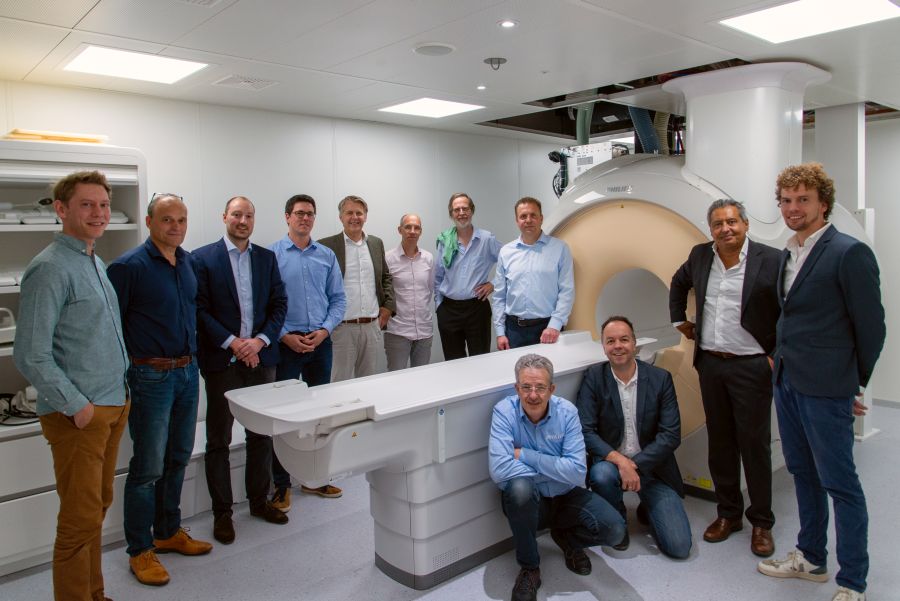
The key of the world’s first simultaneous PET/MRI system with a bore diameter of 70 cm was officially passed over to the University Hospital of Utrecht. In the months before, the Hyperion team had installed the system together with the project partners. A team of Philips MRI experts performed a full system verification and image quality check and confirmed that the integrated active Hyperion III-WB PET does not disturb the MRT. This great success was celebrated by the whole consortium, and well recognized by Philips higher management who visited the University Hospital of Utrecht to inspect the installation.

